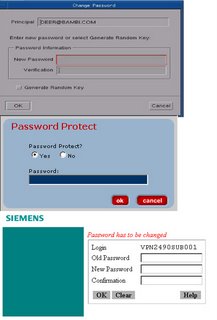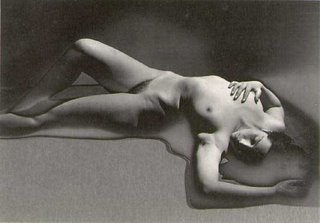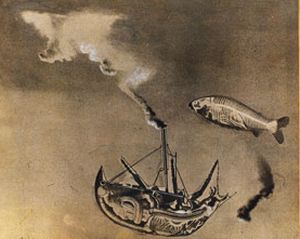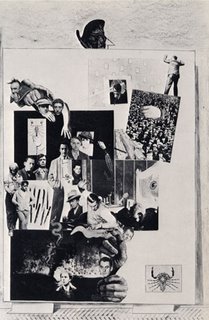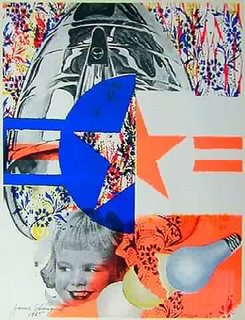
James Rosenquist began his career as a billboard artist. Many of his works are of an oversized scale. The enormity of the images has a particular POWER over the viewer and a certain WEIGHT is achieved. In digital works, it is harder to express this. Navigation is one tool that can help to emphasise this idea. The
HAVAIANAS site highlights what I am referring to. The page ‘space’ is larger than the screen or viewing space and one must interact and NAVIGATE!
F 111 - 1965

The F 111 is a fighter plane that was developed for the Vietnam War. Rosenquists’ artwork is a anti war protest and a social commentary about the commercial effect of war on society, heightened in part by the ‘billboard’ dimensions and commercial nature of the imagery. The ‘F111’ artwork is 10 x 86 feet and follows the length of 3 walls when hanging.

Different elements combine to create the F111 – many juxtapose in context to each other; an airplane, a tire, an umbrella, spaghetti and a girl under a hair dryer.
The work was critically compared to the enormity, dimension and message of Picasso’s Guernica.
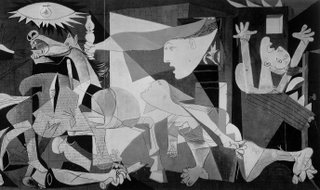
Craig Adcock, Director of the School of Art and Art History at the University of Iowa undertook an interview with the artist in June of 1994; Rosenquist discussed the meaning of the symbolic images in the work.
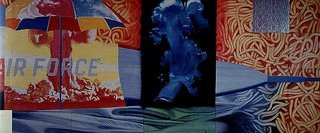
The spaghetti represents the flak that a pilot/plane had to fly i.e. political flak.
The diver is like a big gulp of air that a nuclear explosion consumes.

The angel food cake is a metaphor for a missile silo.
The Firestone tire is represents the concept of industry – bold and oversized.
The wallpaper suggests an atmosphere filled with radioactivity like acid rain.
